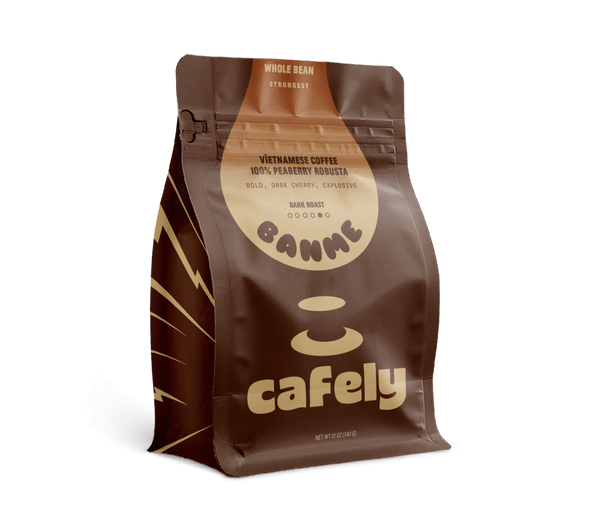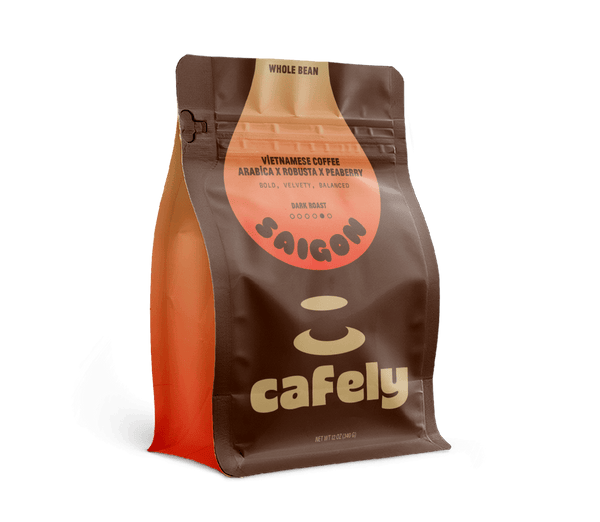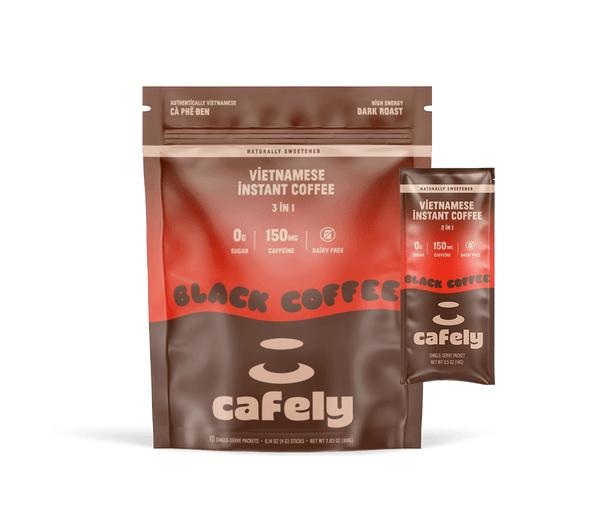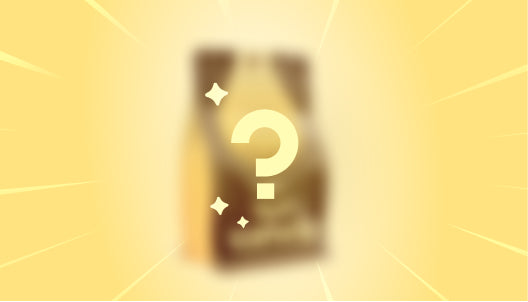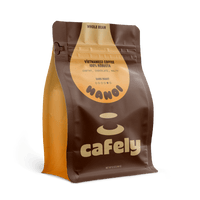Working out how many calories are in a cup of coffee boils down to the type of coffee you’re making. Generally speaking, the sweeter and milkier your brew is, the more calories it’s likely to contain. Avoiding a calorific coffee can be done by opting for low-carb sweeteners and dodging full-fat dairy.
Quick Answer: If you’re wondering how many calories are in a cup of coffee the answer varies between different types. Black coffee contains only 2 calories, but a full-fat latte contains 150 calories. Adding sugar, syrup, milk, and cream to coffee can increase the overall calories substantially.
So, how do you make a cup of instant Vietnamese black coffee even more delicious if you prefer a sweet mugful?
In this article, we’ll cover the calorie content of various types of coffee along with easy ways to keep the calories in coffee down.
Popular Types of Coffee and Their Calorie Content
The calories in black coffee are negligible, so enjoying your brew without additional ingredients is a safe bet for calorie reduction. But if you’re watching your calorie intake and love sipping a creamy, decadent mugful of coffee, then it’s worth looking at the milk and sugar you’re using.
Whole milk can transform an intensely dark coffee into a luscious delight with only a few drops, but adding 15 ml results in an extra 11 calories per cup. Adding a tsp of sugar takes the total to 27 calories, which adds up over the day when you drink more than one cup.
We've listed below some of the popular types of coffee and their calorie content. Knowing how many calories in coffee you’re consuming can be useful if you’re watching your calorie intake [1].
|
Coffee Type |
Calories (8 oz or 240 ml cup) |
|
Black coffee |
2 |
|
Espresso |
2 (shot, 30ml) |
|
Iced Black Coffee |
2 |
|
Coffee prepared from grounds (no milk or sugar) |
2 |
|
Coffee with 1 tsp stevia |
2 |
|
Coffee with 15 ml unsweetened almond milk |
4 |
|
Coffee with 15 ml unsweetened soy milk |
4 |
|
Coffee with 15 ml unsweetened coconut milk (from a carton, not a can) |
4 |
|
Coffee with 15 ml unsweetened oat milk |
5 |
|
Coffee with 15 ml skimmed milk |
7 |
|
Coffee with 15 ml 2% milk |
8 |
|
Coffee with 15 ml whole milk |
11 |
|
Coffee with 15 ml skimmed milk and 1 tsp sugar |
23 |
|
Americano (skimmed milk) |
40 |
|
Cappuccino (non-fat) |
46 |
|
Macchiato (non-fat) |
50 |
|
Coffee with 15 ml heavy cream |
53 |
|
Macchiato (full-fat milk) |
72 |
|
Cappuccino (full-fat milk) |
100 |
|
Mocha (non-fat) |
130 |
|
Latte (full-fat) |
150 |
|
Iced Latte (full-fat milk) |
150 |
|
Flat white (full-fat milk) |
155 |
|
Mocha (full-fat milk) |
185 |
So, how many calories are in your favorite type of coffee?
It depends on the ingredients you use! Adding sugar, milk, or cream to your coffee increases the total calories, especially compared to black coffee which only contains 2 calories.
What about decaf coffee? Would drinking decaf coffee help reduce calorie intake?
Which Has Fewer Calories, Regular or Decaf Coffee?
The calorie content in decaf coffee is virtually the same as regular coffee. The main calorie fluctuations between different types of coffee occur when milk, cream, or sugar are added. Decaf coffee is simply decaffeinated coffee. The only difference is the considerable decrease in caffeine levels — the calorie difference is negligible.
However, decaf is the perfect match if you’re interested in lowering your caffeine intake. Some of the benefits you may feel from drinking decaf coffee compared to regular coffee are:
- Improved sleep quality
- Reduced headaches
- Reduced jitteriness and nervousness
- Potentially reduced systolic and diastolic blood pressure [2]
Again, when it comes to calorie content, there isn’t much difference between decaf and regular coffee.
Why Should You Count Calories from Coffee?
Knowing the calorie content of various coffee drinks helps you easily keep track of the calories you’re consuming. According to the United States Department of Agriculture (USDA), the current calorie guidelines for Americans are [3]:
|
Age 19-30 |
Age 31-59 |
|
|
Female |
1,800 - 2,400 calories daily |
1,600 - 2,200 calories daily |
|
Male |
2,400 - 3,000 calories daily |
2,200 - 3,000 calories daily |
Using the guideline, having two cups of your favorite coffee mocha could easily put you at 17% (females) or 12% (males) of your daily limit. It’s already a significant portion of your daily limit. You’d need to watch what you consume for the rest of the day so you don’t go beyond your desired range.
If you’re unaware of how many calories are in your favorite coffee, it would be very easy to overconsume, especially if you’re adding calorie-dense ingredients such as full-fat dairy and sugar.
Counting your calorie intake can help you maintain a healthy weight. You become more aware of what you consume and can make healthier choices. You also reduce your risk of developing chronic health conditions related to high calorie and sugar intake like diabetes, hypertension, and obesity.
Ways To Reduce Calories From Coffee
Using lighter dairy and dairy-free choices can lower overall calories, whilst keeping things silky and delicious.
Some examples of lighter milk choices include:
- Skimmed milk
- 2% milk
- Unsweetened almond milk
- Unsweetened coconut milk
If you enjoy making Vietnamese iced coffee, you can replace sweetened condensed milk with any of the above. For example, you can pair our DaNang Coffee medium dark-roast coffee with a splash of unsweetened coconut milk. It’s the perfect way to enjoy a delectable iced coffee without a high-calorie content. The coconut milk in a Vietnamese coconut coffee adds a subtle lightness and boosts the tropical floral notes, rewarding you with a sweet, aromatic brew.
Enjoying a lower-calorie version of your favorite coffee means satisfying your coffee cravings, limiting your overall calorie intake, and absorbing the potential benefits.
Coffee is recognized for its wealth of possible benefits including protection against neurological and liver diseases [4]. However, adding cream and sugar can flood your brew with calories, too much of which isn’t good for your health.
Related: How Many Calories Are in a Vietnamese Coffee?
FAQs
Do you still have questions about the calories in coffee? Here are our answers to some of the most popularly asked questions surrounding coffee calories, weight gain, and more.
1. Why are lattes so high in calories?
Lattes have a high-calorie content due to the addition of milk. Lattes are typically also enjoyed with sugar which adds more calories to your brew. Opting for low-fat dairy or plant-based milk and calorie-free sweeteners can substantially lower the calories in a cup of coffee.
2. Does plant-based milk in coffee have fewer calories?
Some plant-based milks such as unsweetened almond, soy, coconut, and oat contain fewer calories compared to full-fat dairy milk or heavy cream. However, sweetened plant-based milks contain significant calories, mainly from additional sugars and syrups.
To keep the calories in your coffee down, choose unsweetened options wherever possible, or try incorporating a few black coffees into some of your weekly coffee breaks.
3. Will I gain weight if I drink coffee?
Drinking low-calorie coffee such as black or sugar-free coffee won’t add much to your recommended daily calorie consumption. Using high-calorie additions in your coffee such as cream and sugar increases calories, especially if you’re drinking several mugs throughout the day. This could put you in a calorie surplus where you may gain weight, although many factors are involved in weight gain.
4. Does coffee affect weight loss?
Some studies have assessed the effects of caffeine on weight loss and found caffeine consumption may promote weight, BMI, and body fat reduction [5]. However, weight loss depends on several lifestyle factors including diet and exercise, so consuming coffee alone may not result in weight loss.
5. Can you drink coffee when you are on a diet?
You can drink coffee if you’re on a diet, but keep an eye on the ingredients you’re using. Calories in coffee can be increased when using full-fat dairy, sugar, and syrup which quickly add up to a substantial amount of calories towards your daily limit. Opting for black coffee, or coffee with skimmed milk and calorie-free sweetener can help keep you on track with your diet as these options contain fewer calories.
Related: Does Coffee Break a Fast?
References:
- Nutracheck Calorie Calculator. Retrieved May 1, 2024 from https://www.nutracheck.co.uk/CaloriesIn/
- Palupi, Nurheni & Fatimah (2021). The Role of Decaffeinated Coffee in Reducing the Risk of Hypertension: A Systematic Review. Journal of Functional Food and Nutraceutical. 99-116. Retrieved April 21, 2024 from https://www.researchgate.net/publication/349933165_The_Role_of_Decaffeinated_Coffee_in_Reducing_the_Risk_of_Hypertension_A_Systematic_Review
- U.S. Department of Agriculture and U.S. Department of Health and Human Services. Dietary Guidelines for Americans, 2020-2025. 9th Edition. December 2020. Retrieved on May 1, 2024 from https://www.dietaryguidelines.gov/sites/default/files/2020-12/Dietary_Guidelines_for_Americans_2020-2025.pdf
- Safe, S., Kothari, J., Hailemariam, A., Upadhyay, S., Davidson, L. A., & Chapkin, R. S. (2023). Health Benefits of Coffee Consumption for Cancer and Other Diseases and Mechanisms of Action. International Journal of Molecular Sciences, 24(3), 2706. Retrieved April 21, 2024 from https://www.mdpi.com/1422-0067/24/3/2706
- Tabrizi R, Saneei P, Lankarani KB, Akbari M, Kolahdooz F, Esmaillzadeh A, Nadi-Ravandi S, Mazoochi M, Asemi Z. (2019) The effects of caffeine intake on weight loss: a systematic review and dose-response meta-analysis of randomized controlled trials. National Center For Biotechnology Information. Retrieved May 1, 2024 from https://pubmed.ncbi.nlm.nih.gov/30335479/
